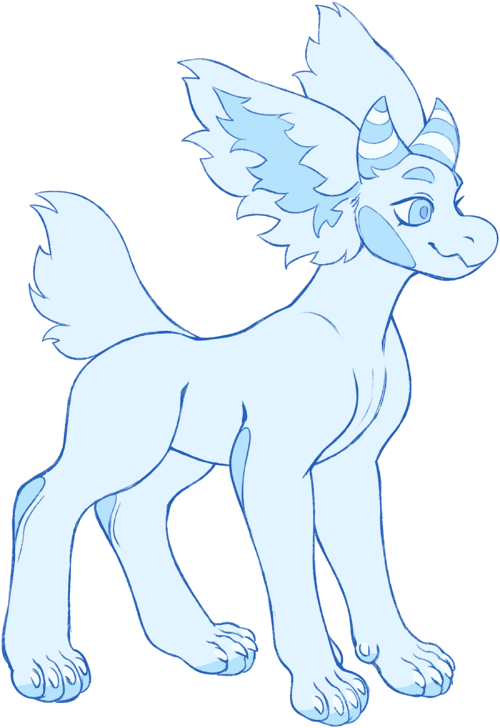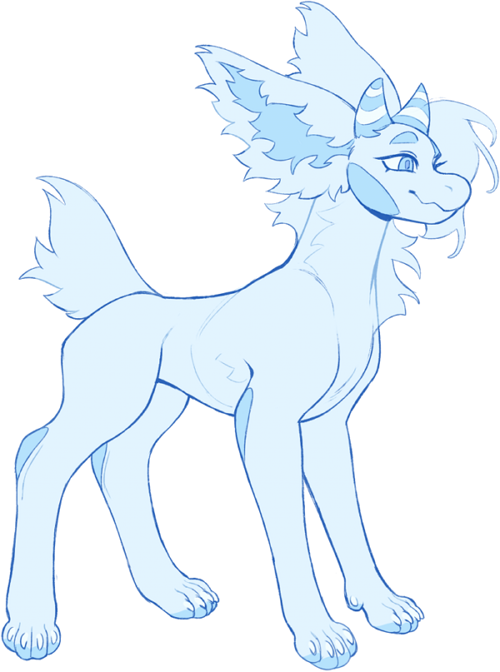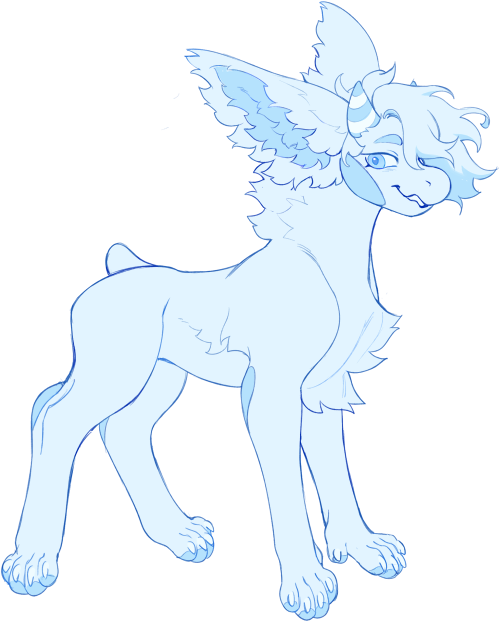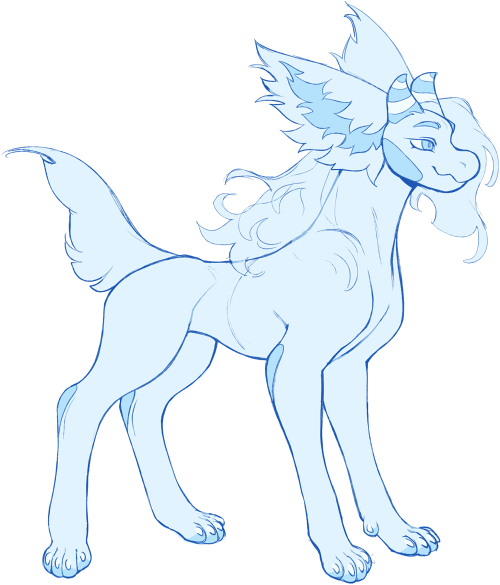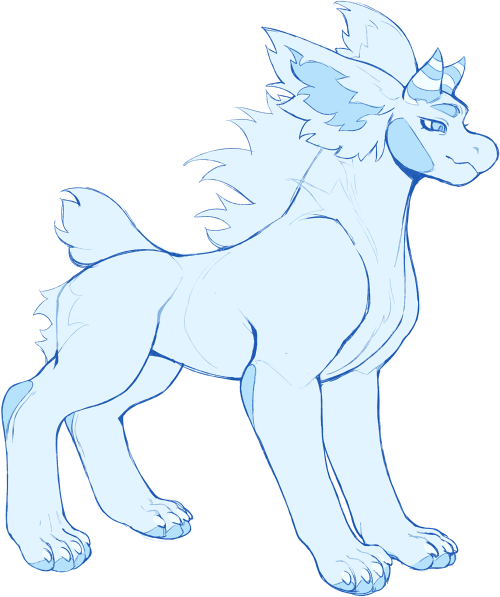
 Mantibabs
Mantibabs 
Mantibabs are known for their vibrant coats, cheek circles, ankle/elbow nubs, and striped horns! If you enjoy vibrant colors this is the species for you!
General
Mantibabs are a versatile and long lived species with a rich history and knack for adventure.
They hold the very soul of crederia in their magic and are able to take hold of the energy that flows through the various planes. They were born with crederia and may be one of its oldest inhabitants. Through their prosperous time on this planet Crederia has flourished in both technology and capacity to hold new life. Babs are capable of crafting the simplest shelters to intricate towns and cities. Kingdoms, caravans, underwater cities, desert jewels and the like can be found with babs in tow. They can lead simple lives as farmers, or they can choose to take up the title of Knight, Blacksmith, Alchemist, Scholar, and the like! You're bound to come across many Mantibabs no matter what part of Crederia you travel!
 Anatomy
Anatomy
Mantibabs are a quadrupedal species that is not quite dog, not quite cat, not quite dragon! They are strong, fast, flexible, and have a wide range of movement in their limbs and joints! These creatures are well-rounded both physically and magically, with mana infused skeletons lending another layer of durability to their bodies.
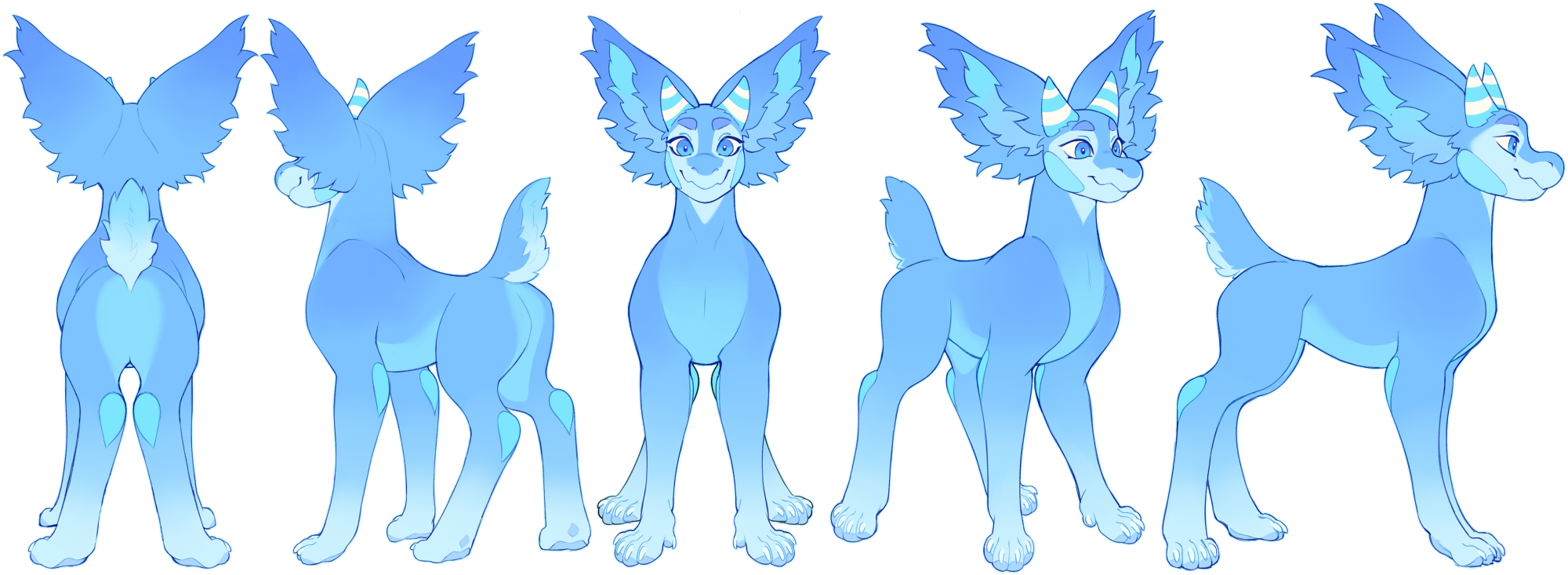
Anatomy Guidelines
- Their bodies are often thicker in the chest and narrower in the rump on average. Their bodies are flexible and durable, allowing a wide range of motion. They are great runners, climbers, and swimmers, with a large lung capacity and high endurance threshhold.
-
Bean shaped heads, zig-zag mouths, and short striped horns make up a bab's head!
-
Babs commonly have noticeable tusks when they open their mouths! (fangs are only seen on.. seasonal occassions)
-
-
Cheek circles, paw pads, ankle nubs, and elbow nubs are soft, bare, and velvety points on a bab that are a significant part of social communications. The vibrancy of these colors is indicative of how magical a bab may be.
- Their large triangular ears add another layer to the way babs express themselves, able to droop, lift, pin back, tremble, fan out, and generally shift along with their emotions. Reading their ears alone can give some insight to a bab's mood.
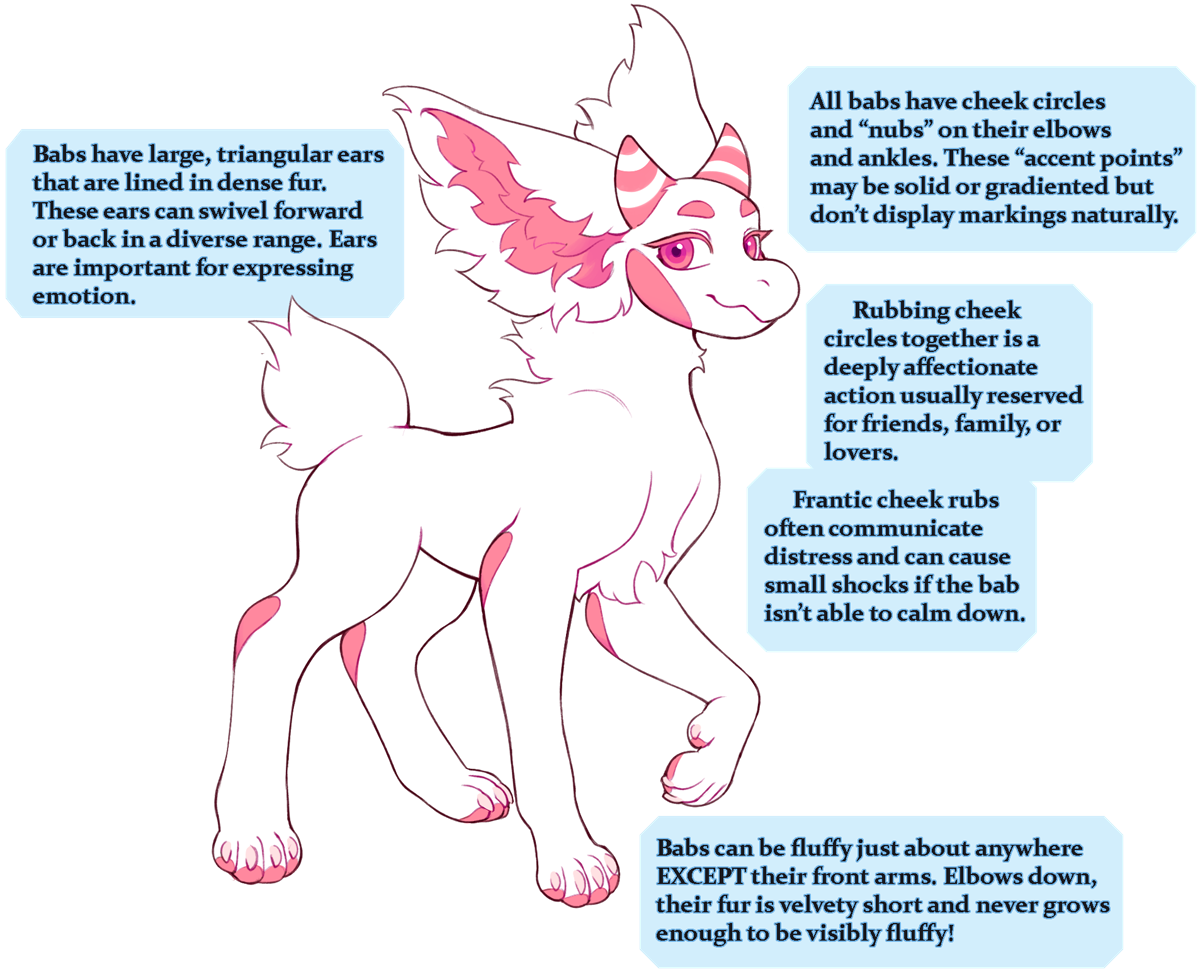
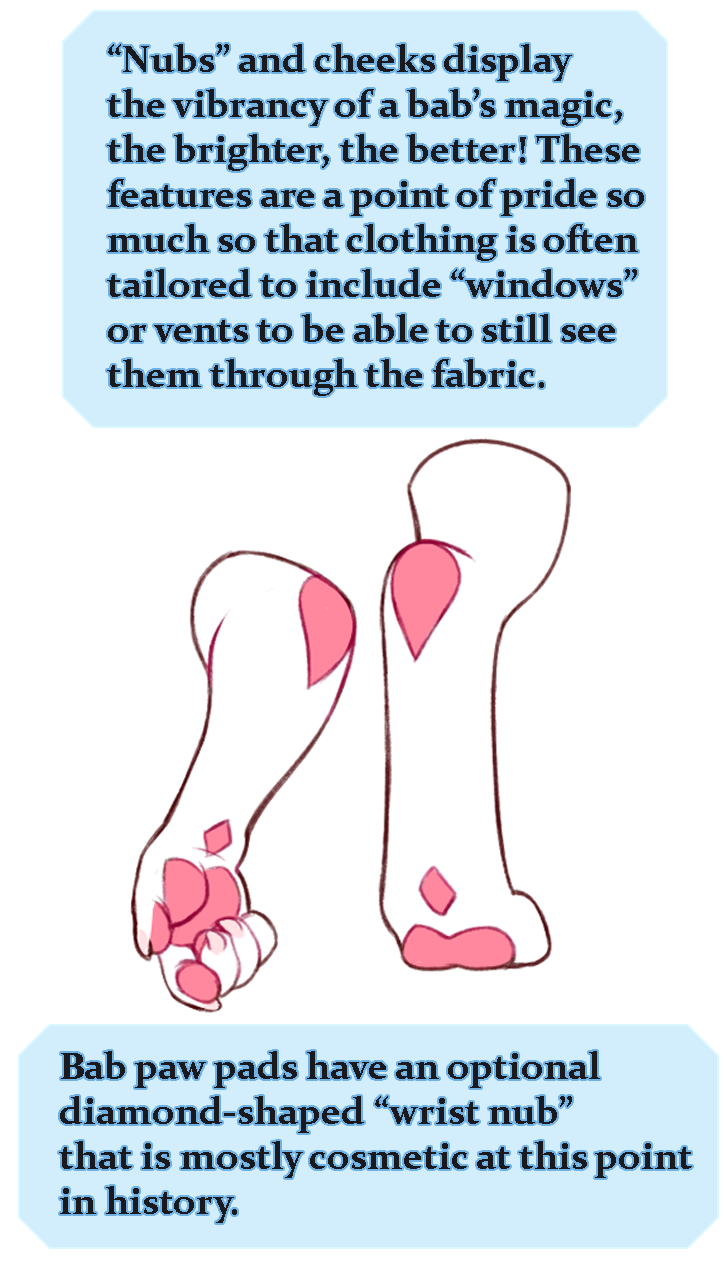
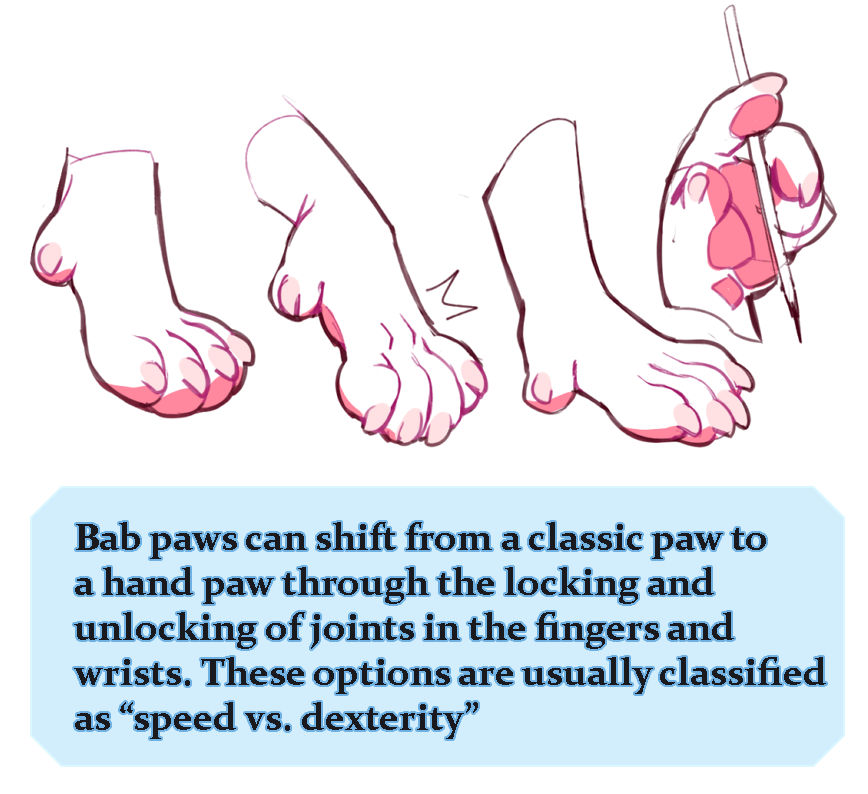
Hands
Mantibabs are an adventurous species, often taking on quests and setting out to begin their journey. Just as commonly, Mantibabs are known to dabble in finer hobbies. Painting, Writing, Cooking, Crafting, you name it! Their hands are peculiar, having specialized joints that allow for delicate or strenuous tasks by shifting the length of the fingers and position of the thumb."Accents"
A bab's "Accent points" Consist of their Horns, Cheeks, Elbow nubs, Ankle nubs, and Paw Pads. Babs rub their cheek circles against one another affectionately. "Knocking" an elbow nub against someone elses can be seen as a challenge, and parents may nip at an elbow or ankle nub to get their Babling to listen. (a bite sends an almost electric twinge down the limb the nub rests on, which can get someones attention or be quite painful. A nip would feel like a tiny shock and would definitely get a babling's attention) An excited babling might rub their cheek against just about anything and anyone (drawing charmed laughter from the older Mantibabs around).
Horns
Horns are an intrinsic part of a bab's identity, and in general are a facet of their everyday life. Horns are relatively short in length, with colorful stripes stark against a white base. They are solid and dense, composed of magic-infused keratin and it is incredibly difficult to crack or break one. (though not impossible) Gently knock your horns against your friends horns to say hello, or rest them against another's to express affection! Horns may be vivid or pastel, with thick, even stripes of a single color alternating with the white base.
Horns may be vivid or pastel, with thick, even stripes of a single color alternating with the white base. 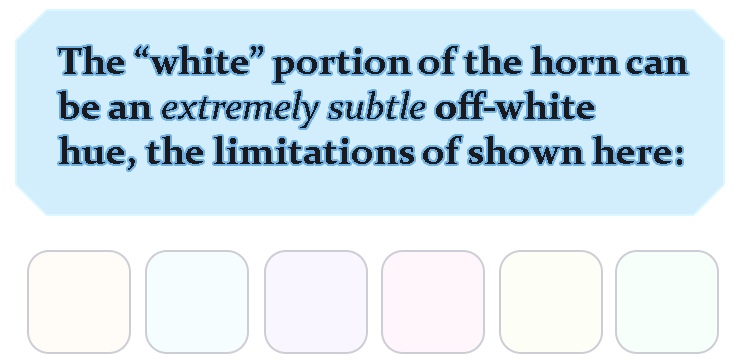
 Body types
Body types
A Mantibab's physical appearance can vary based on their lifestyle, genetics, or environment to an extent: The density of their fur, The length of their claws, the squatness of their snout, or the size of their bodies! Mantibabs come in 5 known bodytypes; Newt, Kou, Jack, Monarch, and Regis.
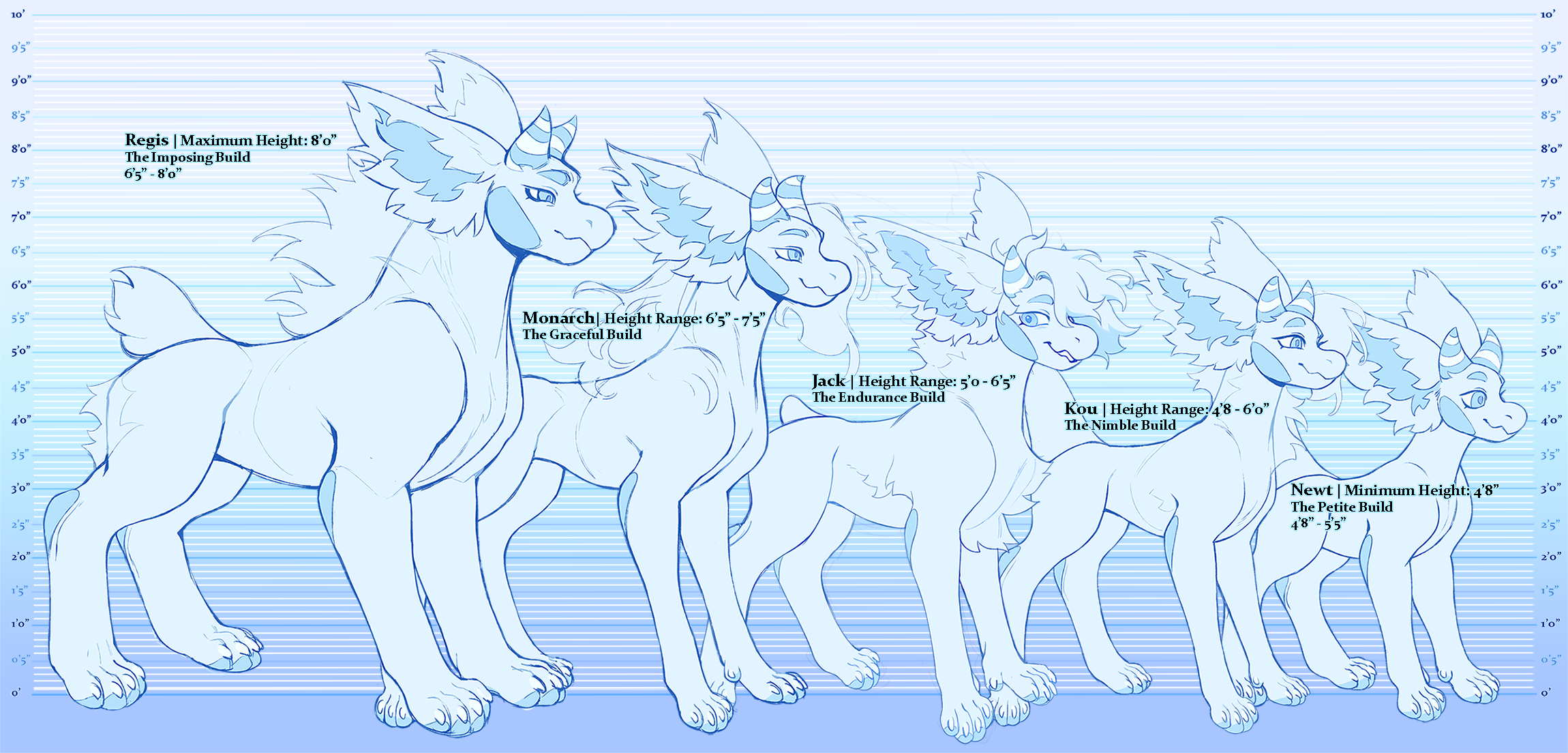
 newt | The petite build
newt | The petite build
- The smallest of the body types, averaging at 5 feet in height. These babs are sometimes rudely misinterpreted as younger babs due to their rounder proportions; though they pack no less a punch than a Kou or Jack bab.
- Considered the "petite" body type, this smaller body allowing Newt babs to get into smaller spaces than most, finding hidden nooks, crannies, caves, tunnels, and the like!
- These babs are slippery, finding mischief easier to pull off as they dart their way out of danger. Their proportionate limbs allowing them great control of their movements.
 kou | The nimble build
kou | The nimble build
- The second smallest of the body types, averaging at about 5'5" feet in height.
- Narrow set chest with a thin neck and slender limbs make up the general look of this bab type.
- These babs are the delicate types, known for their dexterity and mobility through winding terrain more than any feats of strength. Their slender limbs make them frailer than their Jack counterparts, but it allows for a speed the others lack.
- Kou babs have incredible balance and can run along ropes, roofs, or scale cliffsides with more ease than other babs.
 Jack | The endurance build
Jack | The endurance build
- The "average" bab body type, averaging at 6 feet in height. These babs have thick chests, thick necks, and thicker limbs than their Kou counterparts, giving them a more balanced and sturdy appearance.
- Jacks are your classic Mantibabs, built for just about everything; strength, speed, stamina, and magic. Everything about them is average, allowing them to choose their specialty regardless of physical or magical requirement.
 Monarch | The graceful build
Monarch | The graceful build
- One of the two largest body types, averaging at 7 feet in height. These babs are your elegant types, build almost exclusively for speed and grace.
- Long limbs, narrow chest, and an elongated body often give these babs a gangly appearance in adolescence, filling in once they reach adulthood. Their bodies are extremely flexible, able to curl and twist as they manouver around, making them incredible dancers and acrobats.
 Regis | The Imposing build
Regis | The Imposing build
- The second of the largest body types, averaging at 7 - 8 feet in height. Regis babs have the densest skeletal structure, able to withstand heavy wear and impact. This allows these bulky babs to traverse and live in the rockier areas of Crederia, the dangers of the mountainous regions not posing as much to them.
- Thick chests, dense limbs, and squarer heads give this body type a more "dragon"-like appearance. Their limbs makes them less agile than the others, though they more than make up for it in strength and durability.
- They gain muscle easily and have a voracious appetite to help fuel them.
- ⚠️While more beastly in appearance, Regis babs do not have larger claws, teeth, or ears than your average mantibab, and care should be taken to not give them the "monstrous" traits (dragon-like thick claws, protruding fangs, etc.)
![]()
![]()
![]()
 Colors
Colors 
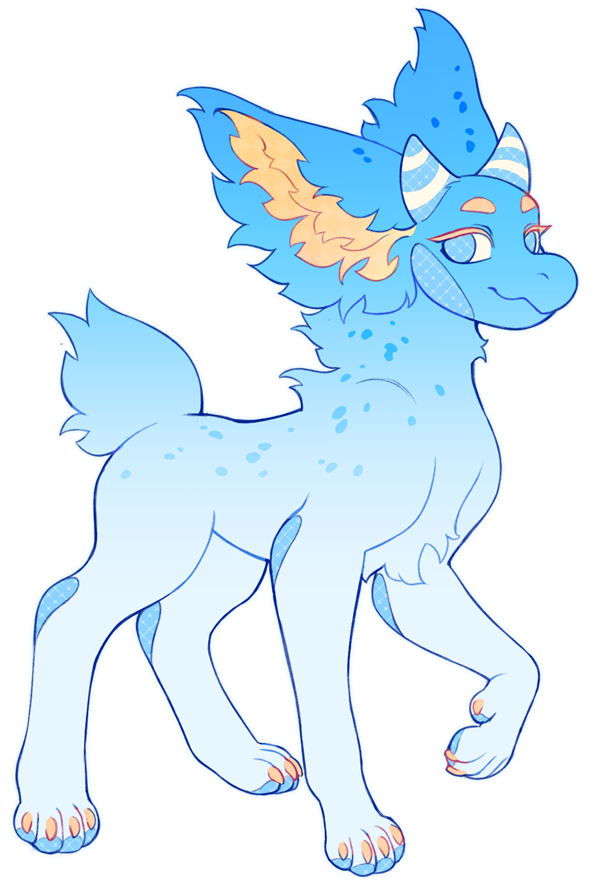

The Base Coat is the majority of your bab, and the portion of the Mantibab that we will break down further in this guide. Commonly, the base coat must always be Vivid and requires at least one spot type.

The cross-patterned areas on the left are "Accents". Accents aren't required to all share the same color, but do need to share a color with their pair. (i.e. Both horns are one color). Accents may be vivid, or pastel, but cannot commonly be greyscale (white, grey, black), dull, or dark.

- Inner Ears may be vivid, pastel, or white, and can be edited with accent shift items.
- Nails, Eyelashes, and Eyebrows may be freely edited without the use of items.
The majority of mantibabs fall into the "Vivid" category.
Vivid mantibabs compose the majority of bab-kind. Color and magic go hand in hand, and the older babs say the brighter your hues, the more in-tune with your magic you are.
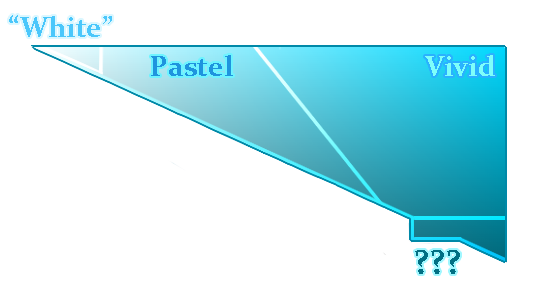
 Color Guidelines & Terminology
Color Guidelines & Terminology
- Vivid: Pick your Base Coat from this area. Any color in this section can compose the majority, or entirety of your mantibab with no issue.
- Pastel: You may pick colors from this area to use partially on your Base Coat or Accents in moderate amounts.
- "White": This area contains the lightest colors all the way up to white. This section may be used in small amounts.
- ???: This section is iffy, and if a tiny portion of your bab falls into this area (like a few spots or small marking or the end to a gradient, ear tips, etc) it may still be approved, but take care to mostly use colors in the vivid category for your bab. The base of your bab's coat may not use colors in this section in any significant capacity.
 Color Limitations
Color Limitations
A Vivid Mantibab has a "Pastel Threshhold" of 40%. Within this threshhold you may use colors in the Pastel or "White" categories. "White" may be used for up to 30% of your Mantibab Maximum. (So a bab using the maximum white allowance could be 30% "White", 10% Pastel, and 60% Vivid.)
Accents are not counted in these percentages, and may be any vivid or pastel color. The inner-ear (a sub-accent), is counted in this percentage.
 Percentages
Percentages
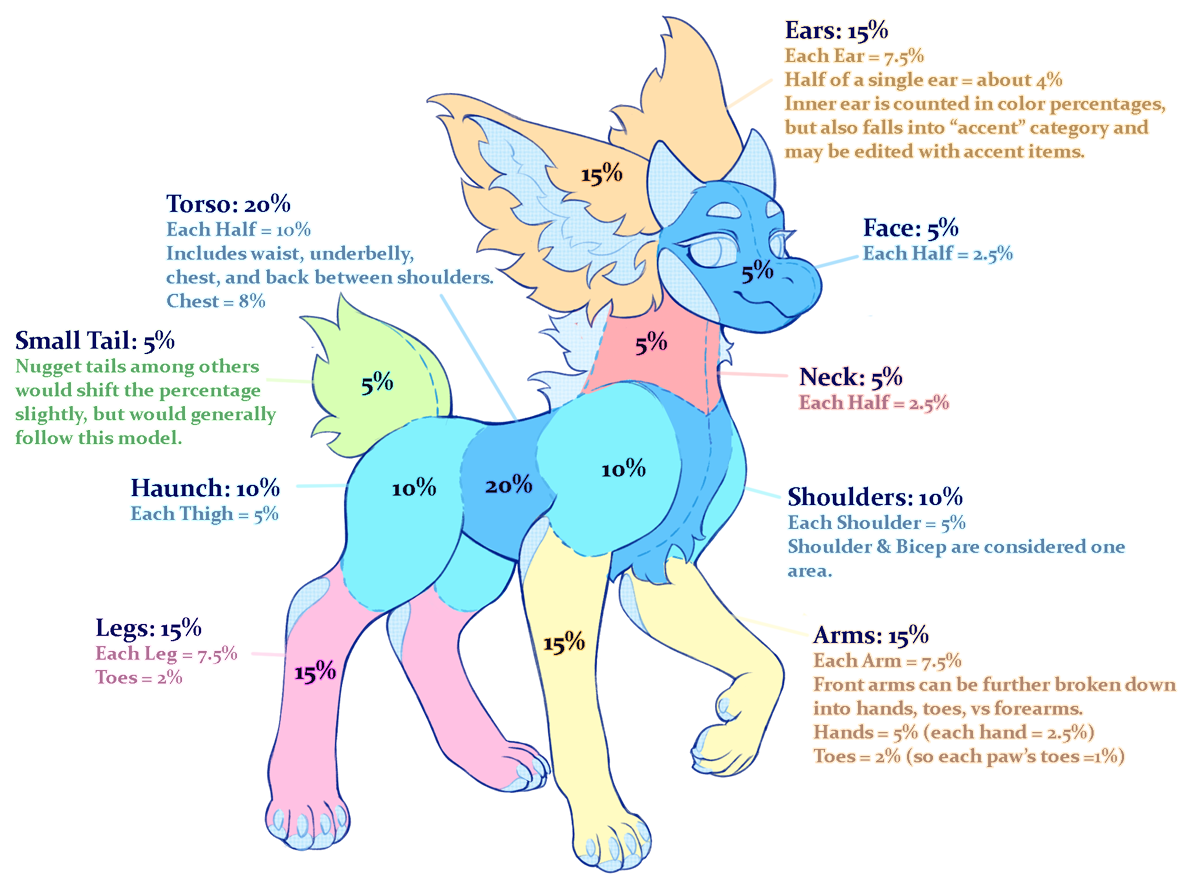
To break it down further, here is your standard Mantibab broken down into percentages. This mantibab has very little fur applied, a small tail, and no hair. This is the standard that bab edits and MYOs will be graded against.
Using this chart, you can begin visualizing where you'll want to place your lighter colors if you plan on making use of the pastel threshhold
Additional breakdowns were made for a medium-length and longer tail below.
 Meow Tailed
Meow Tailed
A medium-length tail will vary depending on thickness, so segmenting it into even chunks is a good way to calculate the final size. In general, 15% is a good estimate for the shorter or thinner mediums.
With these percents, if you wanted the tail to be white, it eats up half of your allowed "white" portion, so your bab shouldn't have too much more from that point (two bottom limbs or both ears, or an underbelly and a single ear, etc would be appropriate, but you wouldn't be able to make the tail and all four limbs white for example.)
Howl Tailed
Rare tails extend out two full body lengths (chest to rump), and are capable of having way more mass than their uncommon counterparts. This howl tail composes 40% of the Mantibab.
If you were to make the entire howl tail white, you would be over the white threshhold by a significant chunk. 30% could be divided among the tail and the body but would look much more sparse than a shorter tailed bab. If your entire bab was vivid, you could make the tail entirely pastel and just meet the 40% pastel threshhold.
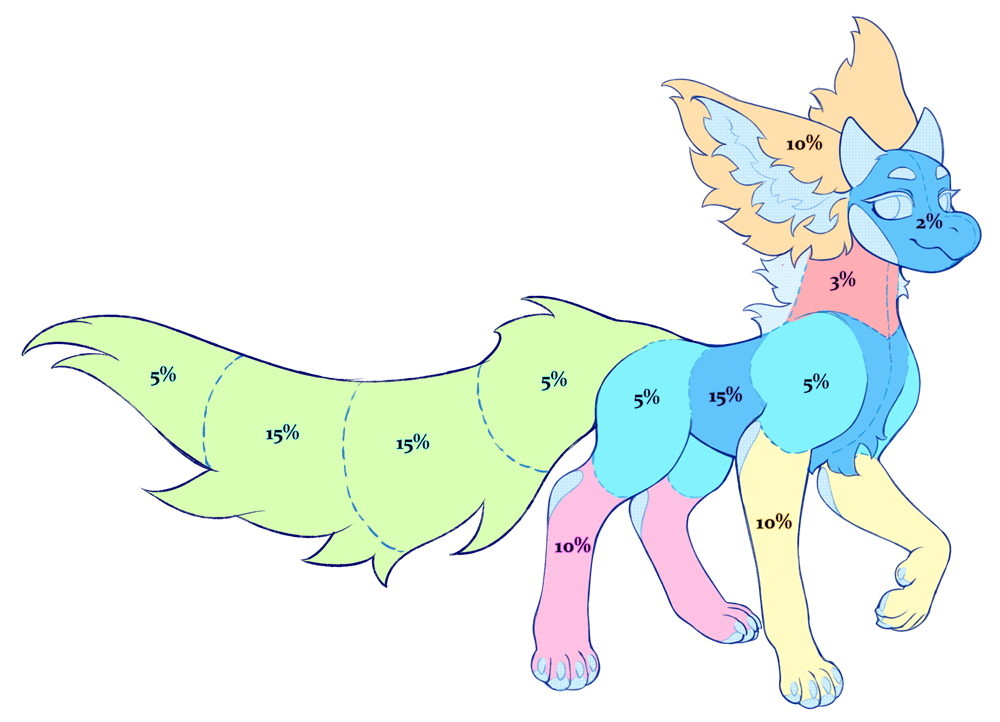
 Color Testing
Color Testing 
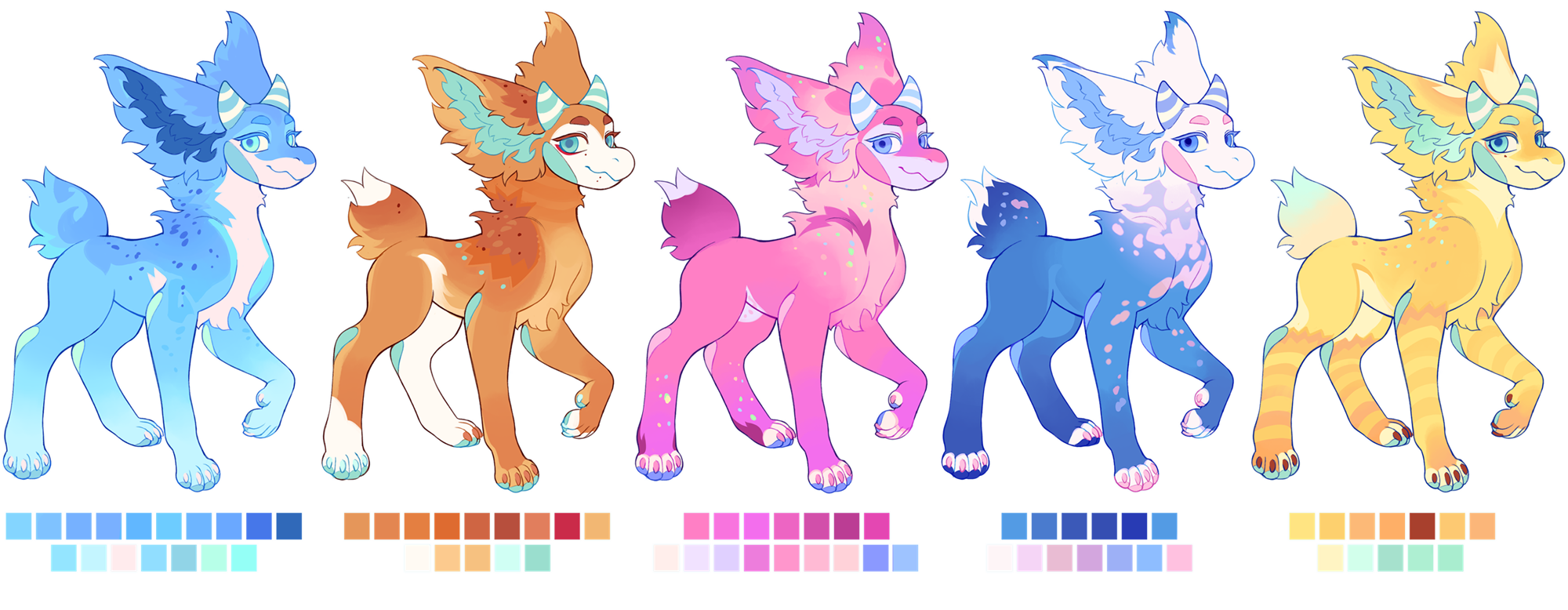
Within the vivid category, blue and purple babs tend to appear the darkest, but you can't mistake their vivid hues for a truly cursed bab. Cool Toned babs will always look darkest, while warm toned babs will appear lightest. Before we get into designing, here are some examples of the darkest and lightest colors available for your common Mantibab.
Mantibabs are a vibrant species at heart, so truly dark hues are not allowed for the vivid coat trait. Take care to not let your colors get any darker than this!
All of these colors are on the same point on the color chart and can be used as a base coat, marking, or accent color.
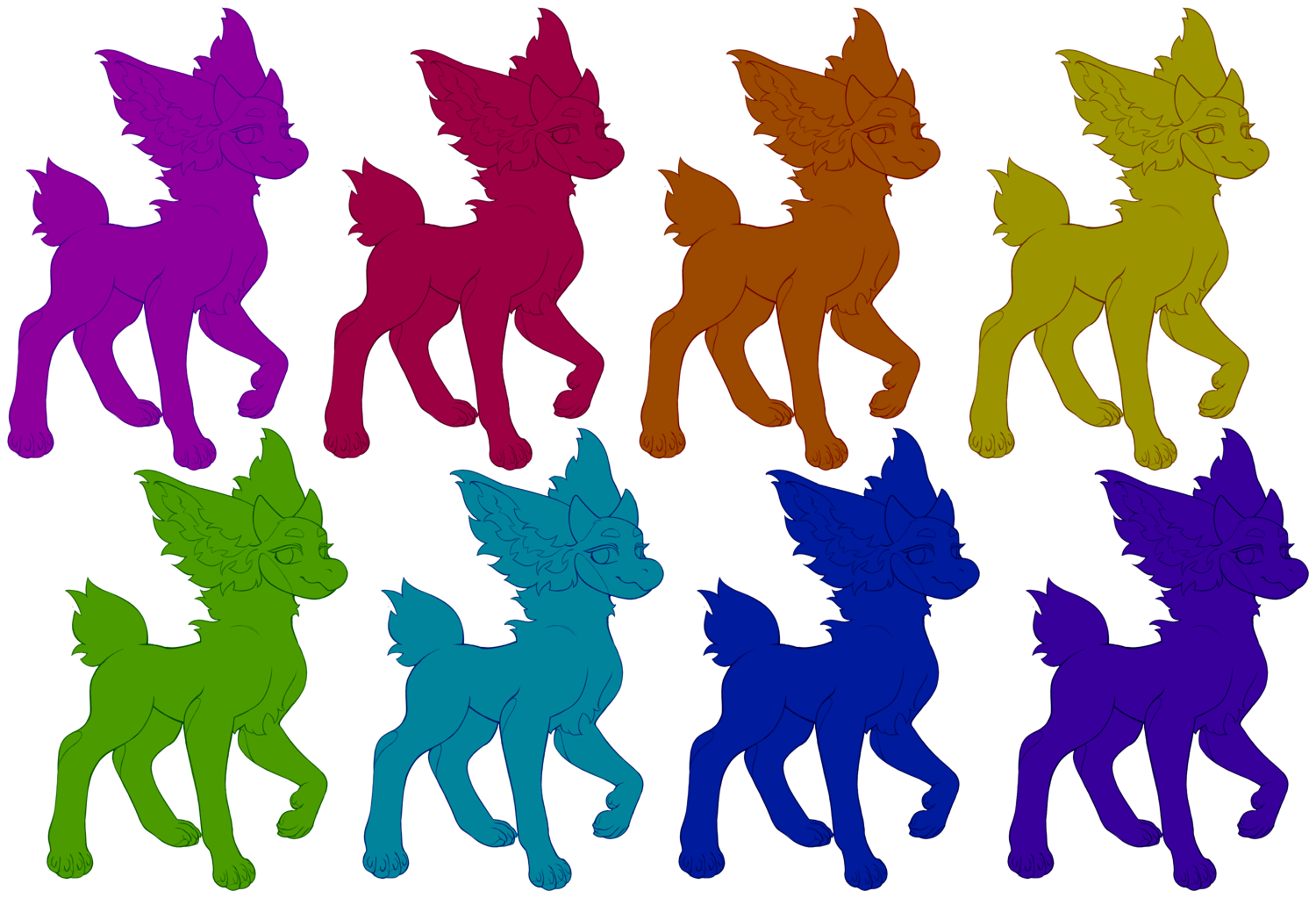
The lightest section of the vivid category threads the fine line between vivid and pastel, but have a very specific cut-off for base hues. If your colors get any lighter than this you've entered pastel category and will be asked to revise!
This is specific to base coats and markings.
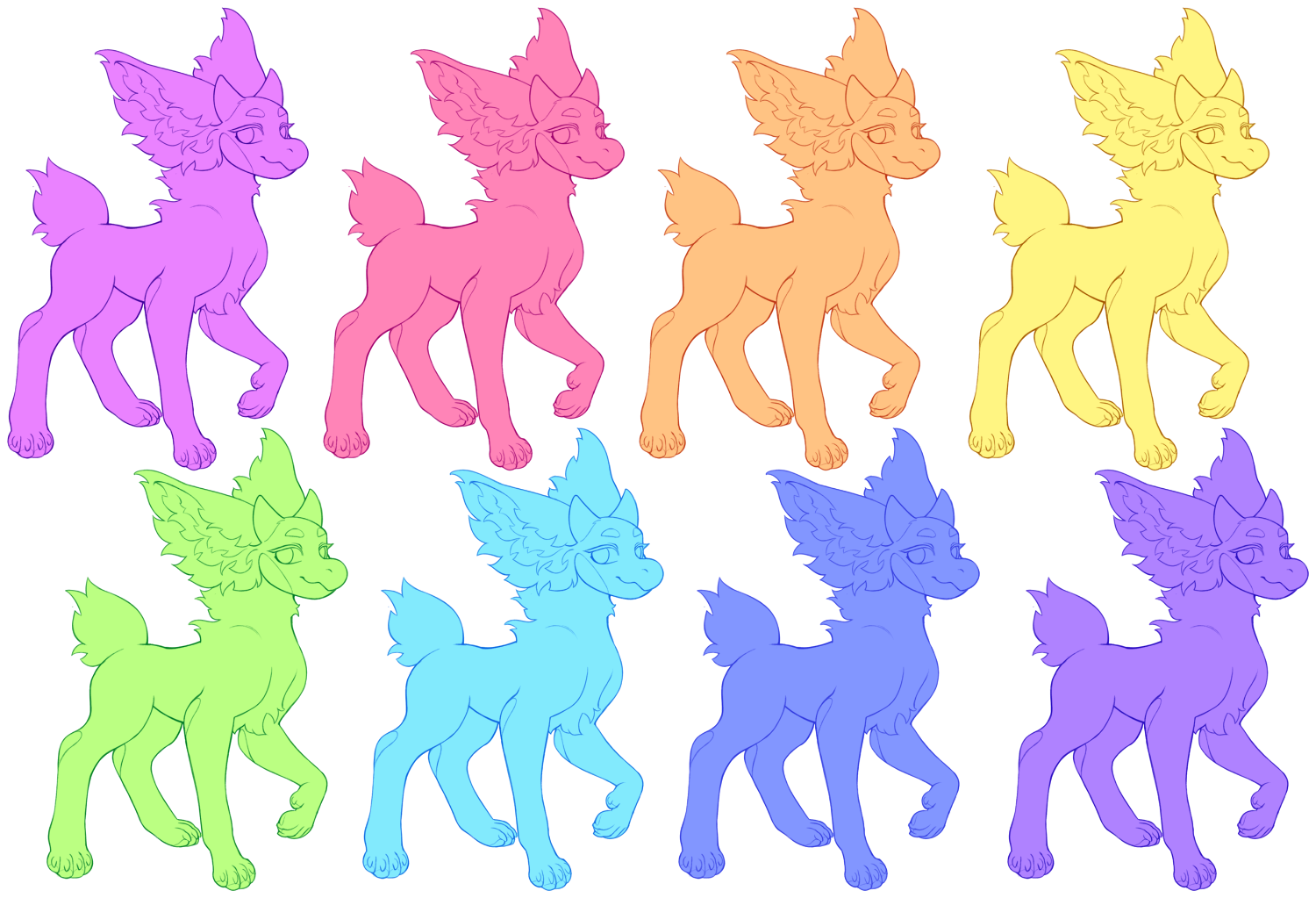
 Additional Info
Additional Info 
 Can a bab ever be dull or dark?
Can a bab ever be dull or dark?
Duller or darker hues are contained in their own traits and subtypes, never seen naturally on a Common Bab. These babs are seldom seen in bab society, either revered or ostracized based on the hue of their coats.
- Dull coats are often indicative of Miasmic Mantibabs but may be found in path subtypes as well
- Dark coats are indicative of Umbra, Changeling, or Raised Mantibabs but may be found in path subtypes as well
- Partially dark babs are called Umbra Halflings
 Can a bab ever be all pastel or white?
Can a bab ever be all pastel or white?
Pastel mantibabs are a rarity, considered blessed by the gods above. While possible, it is not easy to obtain. Mantibabs cannot be purely white, regardless of rarity or coat trait. Pastel babs can get fairly light, but have a limit to how light the hue can display.
- Pastel coats are found in Changeling mantibabs and in various path subtypes.
- Mantibabs that have a higher pastel threshhold but still retain some vivid hues are called Pastel Halflings.
The only Mantibabs that can be purely white, black, or grey are deities and their descendants and is a trait exclusive to lore or NPC characters.
![]()
![]()
![]()
